Football
Football is the most popular team sport in the world, the object of which is to score the ball into the opponent’s goal more times than the opposing team scores within the set period. The ball can be scored into the goal using feet or any other parts of the body (except hands).
Contents
- History of Football (briefly)
- Football rules (briefly)
- Football penalty rules
- Offside position in football
- Handball rule in football
- Yellow and red cards
- Pitch dimensions and marking lines
- Pitch marking
- Football goal
- Football pitch construction
- Ball
- Football equipment
- Standard positions in football
- Refereeing in football
- Competitions
- FIFA
- UEFA
- CONMEBOL
- CONCACAF
- Football entities
History of Football (briefly)
The exact date of football origin is not known, but it’s safe to say that the history of football goes back more than one century and has affected many countries. Ball games were popular on all continents, this is evidenced by the widespread archaeological finds.
In ancient China, there was a game known as “Cuju”, references to which were dated to the second century BC. According to FIFA declaration in 2004, this is the game which is considered to be the most ancient of the predecessors of modern football.
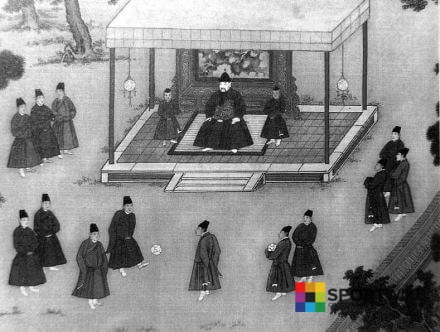
In Japan, a similar game was called “kemari” (in some sources known as “kenatt”). The first mention of kemari is found in 644 AD. Kemari is also played nowadays in Shinto sanctuaries during festivals.
In Australia, balls were made from the skins of rats, the bladders of large animals, and twisted hair. Unfortunately, there are no rules of the game remained. In North America, there also was the ancestor of football, the game was called “pasuckuakohowog”, which means “they gathered to play ball with their feet.” Usually, the games took place on the beaches, the players tried to score the ball into the goal about half a mile wide, the pitch itself was twice as long. The number of game players reached 1000 people.
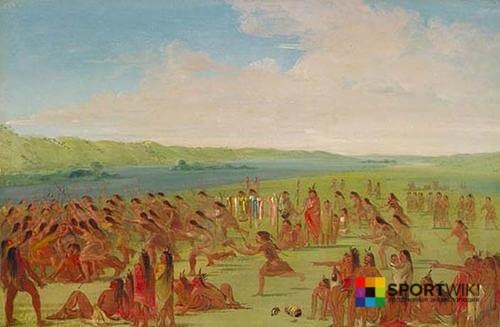
Who invented football?
Modern football was invented in England in the 1860s.
Football rules (briefly)
The first Rules of the Game for football were introduced on December 7, 1863, by the Football Association of England. Today, the Rules of the Game are established by the International Football Association Board (IFAB), which includes FIFA (4 votes), as well as representatives of the English, Scottish, Northern Irish and Welsh football associations. The latest edition of the official Rules of the Game is dated June 1, 2013, and consists of 17 laws, here is a summary:
- Rule 1: Referee
- Rule 2: Assistant referees
- Rule 3: Length of game
- Rule 4: Starting and restarting the game
- Rule 5: Ball in and out of play
- Rule 6: Goal definition
- Rule 11: Offside position
- Rule 12: Fouls and misconducts of players
- Rule 13: Direct and indirect free kicks
- Rule 14: Penalty kick
- Rule 15: Throw-in
- Rule 16: Goal kick
- Rule 17: Corner kick
Each football team shall consist of a maximum of eleven players (that is how many can be on the pitch at the same time), one of which is the goalkeeper and he is the only player who is allowed to play with his hands within the penalty area at his own goal.
How many players are in the team?
The team consists of 11 players: ten outfield players and one goalkeeper.
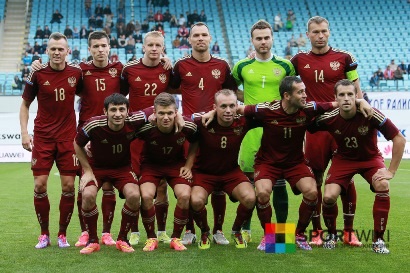
A football match consists of two halves of 45 minutes each. There is a 15-minute half-time break between halves, after which the teams change goals. This is done so that the teams are in equal condition.
The football game is won by the team that has scored more goals against the opponent.
If the teams finished the match with the same goal score, then a tie is fixed, or two additional halves of 15 minutes are assigned. If the additional time ends with a tied score, then a series of penalty shootouts is assigned.
Football penalty rules
An 11-meter kick or penalty is the most serious punishment in football and is carried out from the appropriate mark. When performing an 11-meter kick, the goalkeeper shall obligatory keep the goal.
Penalty shootouts in football are performed according to the following rules: teams carry out 5 shots on the opponent’s goal from a distance of 11 meters, all shots shall be carried out by different players. If, after 5 shots, the penalty score is equal, then the teams continue to take penalty kicks until a winner is revealed.
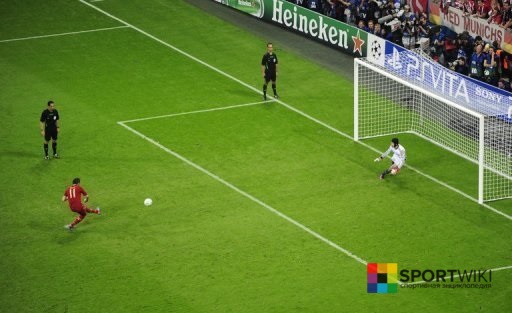
Offside position in football
It is considered that the player is in the offside position if he is closer to the opponent’s goal line than the ball and the second to last player of the opponent, including the goalkeeper.

In order not to get into an offside position, players shall adhere to the following rules:
- it is forbidden to interfere in the game (touching the ball that was passed to him or which touched a team mate);
- it is forbidden to obstruct the opposing player;
- it is forbidden to gain an advantage due to one’s position (touching the ball that bounces off the goalpost or crossbar or from an opposing player).
Handball rule in football
Football Lawes of the Game allow outfield players to touch the ball with any part of the body except their hands. For a handball, the team is awarded a direct free-kick or a penalty kick, which is performed by the player of the opposing team.
The Laws of the Game of handball in football include two other very important points:
- an accidental hit of a ball in a hand is not a foul;
- instinctive defense against the ball is not a foul.
Yellow and red cards
The yellow and red cards are signs that the referee shows the players for fouls and unsporting behavior.
The yellow card is of a precautionary nature and is given to the player in the following cases:
- for intentional handball;
- for play for time;
- for breaking up the attack;
- for a kick before the whistle/exit from the wall (direct free kick);
- for a kick after a whistle;
- for rough play;
- for unsporting behavior;
- for disputes with the referee;
- for simulation;
- for leaving or entering the play without the permission of the referee.
The red card in football is shown by the referee for extremely rough fouls or unsporting behavior. The player who received the red card must leave the field of play before the end of the match.
Pitch dimensions and marking lines
The standard pitch for big football is a rectangular area in which the goal lines (front lines) are necessarily shorter than the touchlines. Next, we will consider the parameters of the football pitch.
The size of the football pitch in meters is not clearly regulated, but there are certain boundary indicators. For matches of the national level, the standard length of a football pitch from goal to goal should be within 90-120 meters and the width – within 45-90 meters. The area of the football pitch ranges from 4,050 m2 to 10,800 m2. For comparison, 1 hectare = 10,000 m2. For international matches, the length of the touchlines should not go beyond the interval of 100-110 meters, and the length of the goal lines – beyond 64-75 meters. There are FIFA recommended football pitch dimensions of 105 by 68 meters (7,140 square meters).
How long is a pitch?
The length of the football pitch from goal to goal should be within 90-120 meters.
Marking of the field is carried out with the same lines, the width of the marking should not exceed 12 centimeters (lines are included in the areas that they limit). The side line or edge of a football field is commonly called the “touchline”.
Pitch marking
- Halfway line is a line that divides the field into two halves. In the middle of the halfway line is the centre spot with a diameter of 0.3 meters. The circumference around the centre spot is 9.15 meters. A kick or a pass from the centre spot start both halves of the match, as well as additional time. After each goal scored, the ball is also set to the centre spot.
- Goal-line in football is drawn on the pitch parallel to the crossbar.
- Football goal area is a line that is drawn 5.5 meters from the outside of the goalpost. Perpendicular to the goal line, there are two lines 5.5 meters long drawn directed inward the field. Their end points are connected by a line parallel to the goal line.
- Penalty area is composed of points at a distance of 16.5 m from the inside of each goalpost, at a right angle to the goal line, two lines are drawn inward the field. At a distance of 16.5 m, these lines are connected by another line parallel to the goal line. In the middle of the goal line and at a distance of 11 meters from it, a penalty spot is applied, it is marked with a solid circle with a diameter of 0.3 meters. Within the penalty area, the goalkeeper may play with his hands.
- Corner sectors are arcs with a radius of 1 meter centered at the corners of a football field. This line forms a limited area for corner kicks. In the corners of the field, flags are installed with a height of at least 1.5 meters and a cloth size of 35×45 centimeters.
Marking of the field is carried out using lines, the width of which should be the same and not exceed 12 centimeters. The image below shows the marking layout of the football pitch.
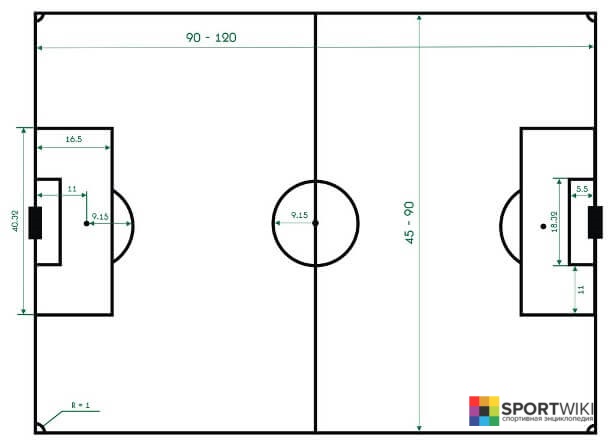
Football goal
The goal is located exactly in the middle of the goal line. The standard football goal dimensions are as follows:
- the length or width of the goal in big football — the distance between the vertical posts — 7.73 meters;
- the height of the goal — the distance from the pitch to the crossbar — 2.44 meters.
The diameter of the posts and the crossbar should not exceed 12 centimeters. The goal is made of wood or metal and painted white, and also has the shape of a rectangle, ellipse, square or circle in cross-section.
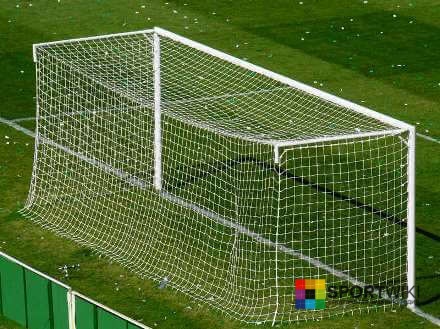
The goal net in football must be consistent with the size of the goal and must be strong. Football nets of the following size are usually used: 2.50 x 7.50 x 1.00 x 2.00 m.
Football pitch construction
The standard design of the football pitch is as follows:
- Grass turf.
- Substrate of sand and gravel.
- Heating pipes.
- Drainage pipes.
- Aeration pipes.
The turf for the football pitch can be natural or artificial. Grass turf requires additional care, namely watering and fertilizing. Grass turf does not allow to take more than two games per week. The grass is brought to the field in special rolls of turf cover. Very often on the football pitch, one can see the grass of two colors (striped pitch), it is due to the peculiarities of turf care. When mowing the turf, the car first goes one way, and then the other way, and the grass lies in different directions (multidirectional turf mowing). This is done for the convenience of determining distances and offsides, as well as for beauty. The height of the grass on the football pitch is usually 2.5 — 3.5 cm. The maximum speed of the ball in football today is 214 km/h.
The artificial turf for the football pitch is a carpet made of synthetic material. Each blade of grass is not just a strip of plastic, but a product of complex shape. For the artificial turf to be suitable for play, it is covered with a filler of sand and rubber crumb.
Ball
What ball is used for playing football? A professional soccer ball consists of three main components: bladder, backing, and cover. The bladder is usually made of synthetic butyl or natural latex. The backing is the inner layer between the cover and the bladder. The backing directly affects the quality of the ball. The thicker it is, the better the ball. The backing is usually made of polyester or pressed cotton. The cover consists of 32 synthetic waterproof panels, 12 of which are pentagonal, 20 are hexagonal.
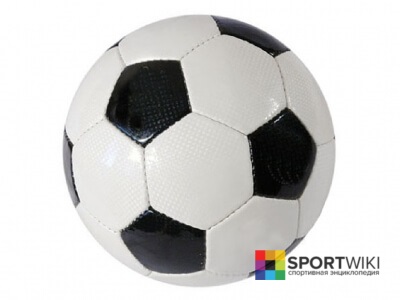
Ball dimensions:
- circumference — 68-70 cm;
- weight – no more than 450 g.
The speed of the ball in football reaches 200 km/h.
Football equipment
The basic elements of a player’s football equipment are:
- Shirt or T-shirt with sleeves.
- Shorts. If undershorts are used, then they should be the same color.
- Stockings.
- Shin guards. Shall be completely covered with stockings and provide the proper level of protection.
- Football boots.
Why do football players need stockings?
Stockings perform a protective function, supporting the leg and protecting it against minor injuries. Thanks to them, the shin guards are kept.
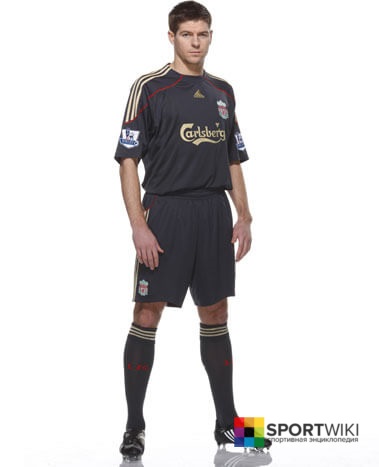
The goalkeeper's football kit shall differ in color from the kit of other players and referees.
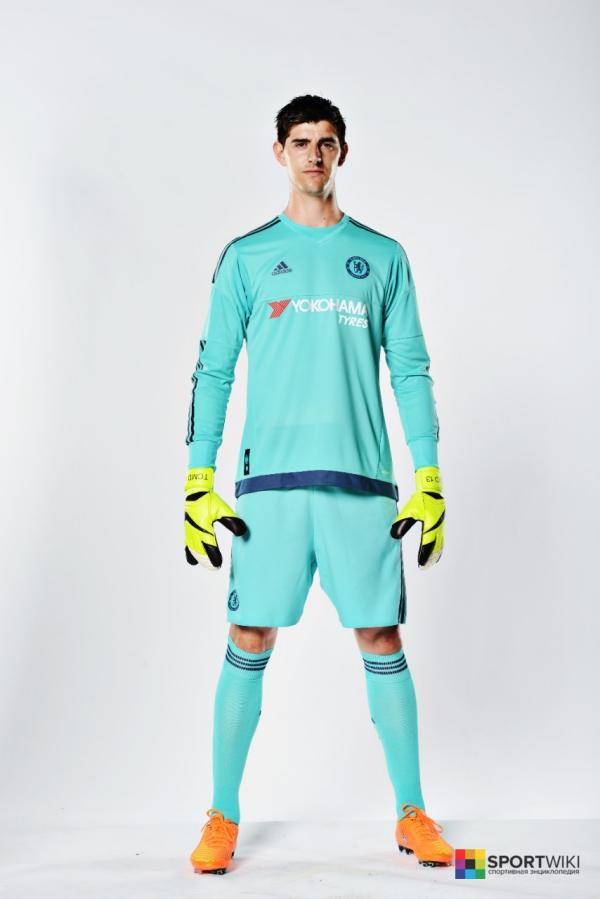
Players shall not wear any equipment that could be dangerous to them or other players, such as jewelry and wrist watches.
What do football players wear under shorts?
Under shorts are tight-fitting compression shorts. The color and length of the undershorts should not differ from the color and length of the shorts.
Standard positions in football
- Kick-off. A kick-off in football is used in three cases: to start the game, to start the second half and after a goal is scored. All players of the team performing the kick-off shall be in their half of the field of play and all opposing players — at a distance of not less than nine meters from the ball. The player performing the kick-off is not allowed to touch the ball again before other players do.
- Goal kick. Getting the ball back in play after it left the goal line (on the side of the post or above the crossbar), through the fault of the player of the attacking team.
- Throw-in. Performed by an outfield player after the ball has crossed the touchline and left the field of play. Throw-in is taken from the point where the ball became “out of play”. The player performing the throw-in must face the field of play standing on or behind the touchline. At the time of the throw, both feet of the player must touch the ground. The ball is brought in play without a signal from the referee.
- Corner kick. Getting the ball back in play from the corner sector. Awarded to players of the defending team who kicked the ball out of play over the goal line.
- Direct and indirect free kicks. Awarded for intentionally touching the ball with hand or using rude techniques against players of the opposing team.
- Penalty kick (11-meter kick).
- Offside position.
Refereeing in football
The referees monitor compliance with the set rules at the football pitch. A referee and two assistants are appointed for each match.
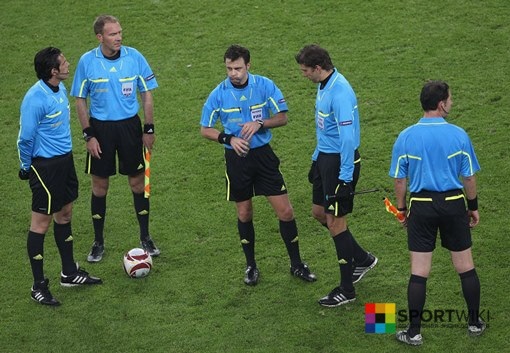
The duties of a referee include:
- Match timing.
- Recording match events.
- Ensuring ball compliance with the requirements.
- Ensuring compliance of players’ equipment with the requirements.
- Ensuring the absence of unauthorized persons on the pitch.
- Ensuring getting away/taking out of injured players from the pitch.
- Providing the relevant bodies with a match report, including information on all disciplinary action taken against players and/or team officials, as well as on all other incidents that occurred before, during or after the match.
Referee’s rights:
- to stop, to temporarily break or to terminate the match in case of any foul, interference by an external party, players’ injury;
- to take action against team officials behaving incorrectly;
- to continue the game until the ball is out of play if the player, in his opinion, received only a minor injury;
- to continue the game when the team against which the foul was committed benefits from such a foul (remains with the ball), and to punish for the initial foul if the team did not use the intended advantage;
- to punish a player for a more serious foul if he simultaneously commits more than one foul;
- to act based on the recommendation of his assistants and fourth official.
Competitions
The competitions are organized by the federation, for each tournament its Regulations are drawn up, which usually prescribes the entry list, the tournament schedule, and the rules for determining the winners.
FIFA
National team competitions
- World Cup is the main international football competition. The championship is held once every four years, male national teams of FIFA countries of all continents can take part in the tournament.
- Confederations Cup is a football competition among national teams, which is held a year before the World Cup. It is held in the World Cup host country. Eight teams take part in the championship: the winners of continental championships, the winner of the World Cup and the team of the host country.
- Olympic Games
Club competitions
- Club World Cup is an annual competition between the strongest representatives of six continental confederations.
UEFA
National team competitions
- European Championship is the main competition of national teams under the leadership of UEFA. The championship is held once every four years.
Club competitions
- UEFA Champions League is the most prestigious annual European club football tournament.
- UEFA Europa League is the second most important tournament for European football clubs affiliated with UEFA.
- UEFA Super Cup is a single-match championship in which the winners of the UEFA Champions League and the UEFA Europa League of the previous season meet.
CONMEBOL
National team competitions
- Copa América is a championship held under the authority of CONMEBOL among the national teams of the region.
Club competitions
- Copa Libertadores is the cup named after the historical leaders of the war for the independence of the Spanish colonies in America. Held among the best clubs in the region.
- Copa Sudamericana is the second most important club tournament in South America after the Copa Libertadores.
- Recopa Sudamericana is an analog of the Continental Super Cup. The winners of two major club tournaments — the Copa Libertadores and the Copa Sudamericana of the previous season — take part in the tournament.
CONCACAF
National team competitions
- CONCACAF Gold Cup is a football tournament for the countries of North, Central America and the Caribbean.
Club competitions
- CONCACAF Champions League is an annual football championship among the best clubs in North and Central America and the Caribbean.
Football entities
The main football organization is the FIFA (Fédération internationale de football association), located in Zurich, Switzerland. It organizes international world-class tournaments.
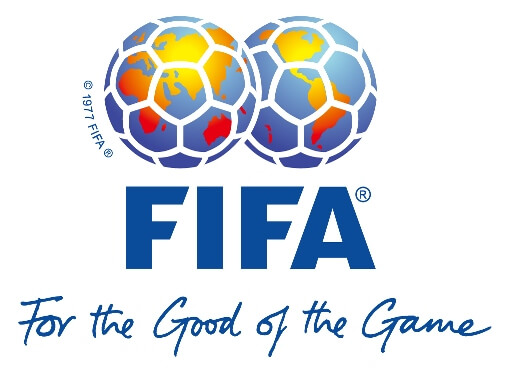
Continental organizations:
- CONCACAF (Confederation of North, Central American and Caribbean Association Football) is a confederation of football in North and Central America and the Caribbean,
- CONMEFBOL (CONfederacion sudaMEricana de FutBOL) is South American Football Confederation,
- UEFA (Union of European Football Associations) is the union of European football associations,
- CAF (Confederation of African Football) is African Football Confederation,
- AFC (Asian Football Confederation) is Asian Football Confederation,
- OFC (Oceania Football Confederation) is Oceania Football Confederation.

